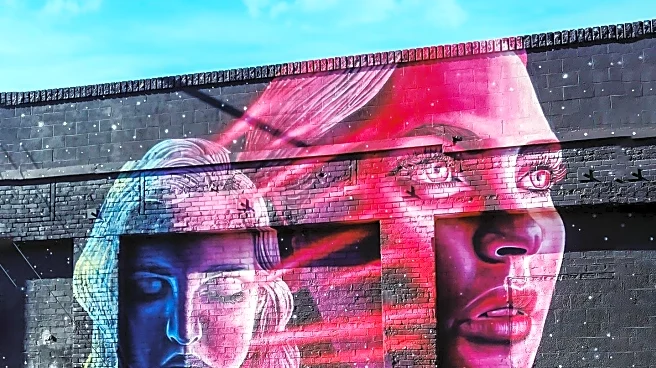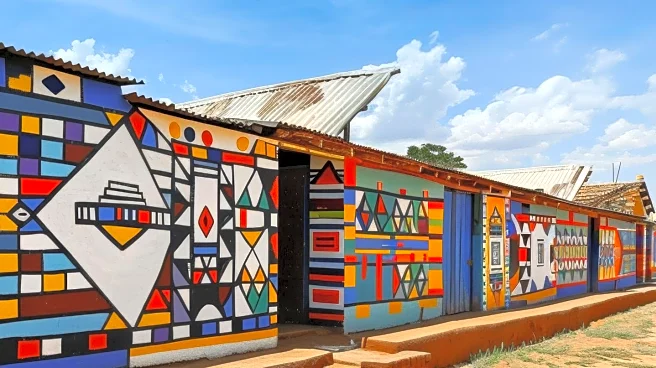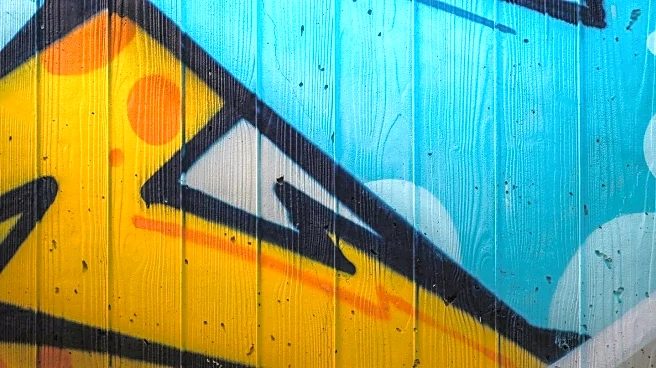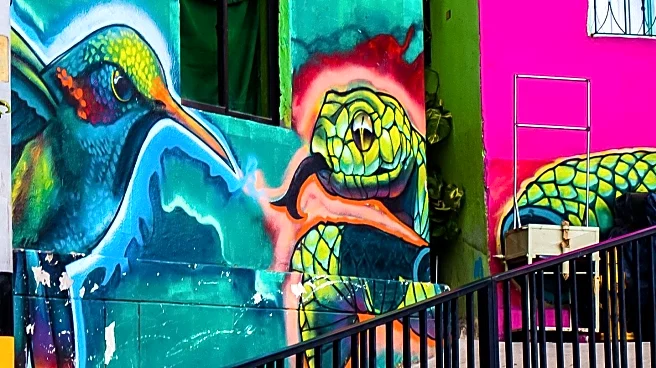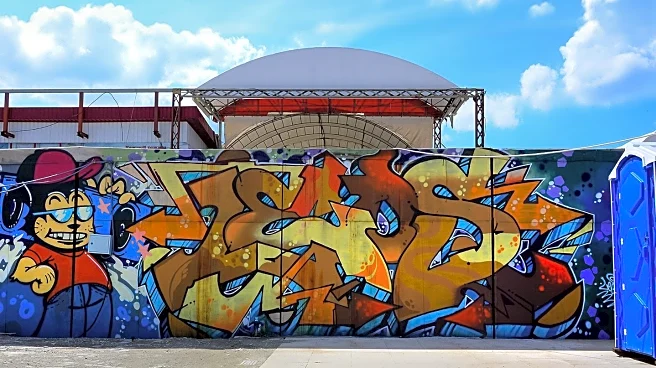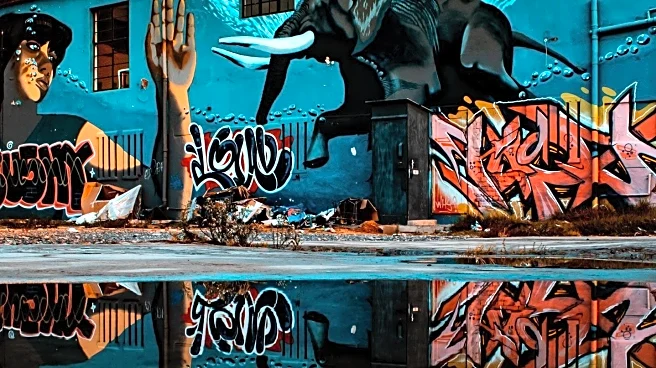What's Happening?
In West Africa, graffiti is evolving from a form of vandalism into a respected art form that reflects regional culture and identity. Artists like Omar Diaw, known as 'Chimere,' have been instrumental in this
transformation. Diaw, originally from Senegal, moved to Guinea in 2018 and began using graffiti to raise public awareness on various issues, including COVID-19 preventive measures. His work, along with that of other artists, has become a significant part of the urban landscape in Conakry, Guinea's capital. The graffiti movement in West Africa began in Dakar, Senegal, in 1988, led by Amadou Lamine Ngom, known as 'Docta.' Ngom's approach to graffiti, which emphasizes African reality and values, has influenced many artists, including Diaw. The art form is now gaining acceptance from both the public and authorities, with murals addressing social issues such as migration.
Why It's Important?
The growing acceptance of graffiti in West Africa signifies a cultural shift where street art is being recognized as a legitimate form of expression that can address social and political issues. This transformation has the potential to influence public opinion and foster community engagement. By reflecting local culture and history, graffiti can strengthen community identity and pride. The movement also opens opportunities for artists to engage in public discourse and influence change. Additionally, the inclusion of more diverse voices, such as women, in the graffiti scene could further enrich the cultural landscape and promote gender equality in the arts.
What's Next?
As graffiti continues to gain acceptance, there may be increased opportunities for artists to collaborate with local governments and organizations on public art projects. This could lead to more widespread recognition of graffiti as a tool for social change and cultural expression. Efforts to include more women in the graffiti scene could also gain momentum, potentially leading to a more diverse and inclusive art community. The ongoing support from authorities, like the governor of Conakry, suggests that graffiti will continue to play a significant role in shaping the cultural and social landscape of West African cities.
Beyond the Headlines
The acceptance of graffiti in West Africa highlights broader themes of cultural preservation and innovation. As artists incorporate traditional and contemporary elements into their work, they contribute to a dynamic cultural dialogue that bridges past and present. This evolution of graffiti also raises questions about the role of art in public spaces and its potential to challenge societal norms and inspire change. The movement's success in West Africa could serve as a model for other regions seeking to harness the power of street art for community development and social awareness.
